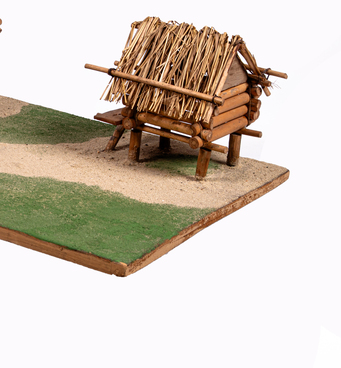Hunting, along with fishing, was one of the main occupations of the Amur indigenous peoples. Manually-operated bows and arrows were used by local hunters up to the early 20th century. The bows were used to kill large animals: deer, elk, Manchurian deer, and bears, as well as birds and squirrels.
A simple bow had a straight shape in all parts of the region and could be used as a ski pole, while arrowheads were very diverse in shape, size and material, depending on the hunted animal.
Bone arrowheads were made from the leg bones of elk, musk deer, and deer and were 8 to 12 centimeters long. Shorter and wider iron arrowheads had stingers. In addition to manually-operated bows, crossbows were widely used in the Amur region. It was a complex device that consisted of a bow with a bowstring, an arrow rest, and a trigger mechanism.
Arrows for the bow and crossbow were different and had various names. Both large animals and small fur-bearing animals were also killed with a crossbow. However, the front part of the crossbow arrow was hollow inside; a thin rope passed through the longitudinal hole.
The arrow for a large crossbow did not have a hole, but deep notches along the entire length of the shaft. The iron arrowhead was attached with fish glue. If a large animal tried to pull the arrow out of the body with its teeth, the shaft was broken thanks to the notches. The arrowhead remained in the body of the prey in any case, because the fish glue melted with warm blood.
Arrows for bows and crossbows were carried behind the back in special quivers made of wood, leather, and kamus — the skin from the legs of elk or deer, as well as deerskin suede. As a rule, they were elaborately decorated with patterns. The Nivkh people of the Amur region and Sakhalin sewed quivers from seal skin or thick skin of the Steller sea lion — the long-eared seal.
The quivers made of
deerskin suede and kamus were probably a legacy of the Tungusic culture. The
quiver presented in the exhibition suggests that material and decoration
techniques were borrowed from the peoples neighboring the Ulchi, such as the
Negidals or Evenks. Exquisite patterns served as an amulet for the valuable
hunting gear.



